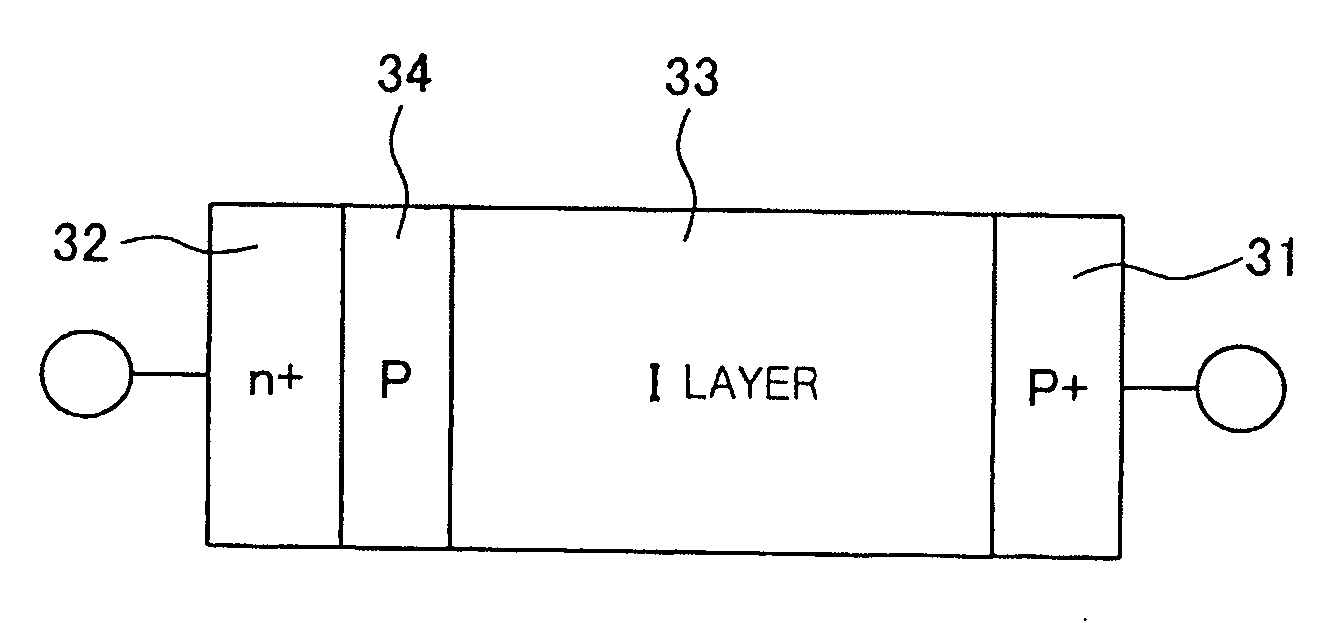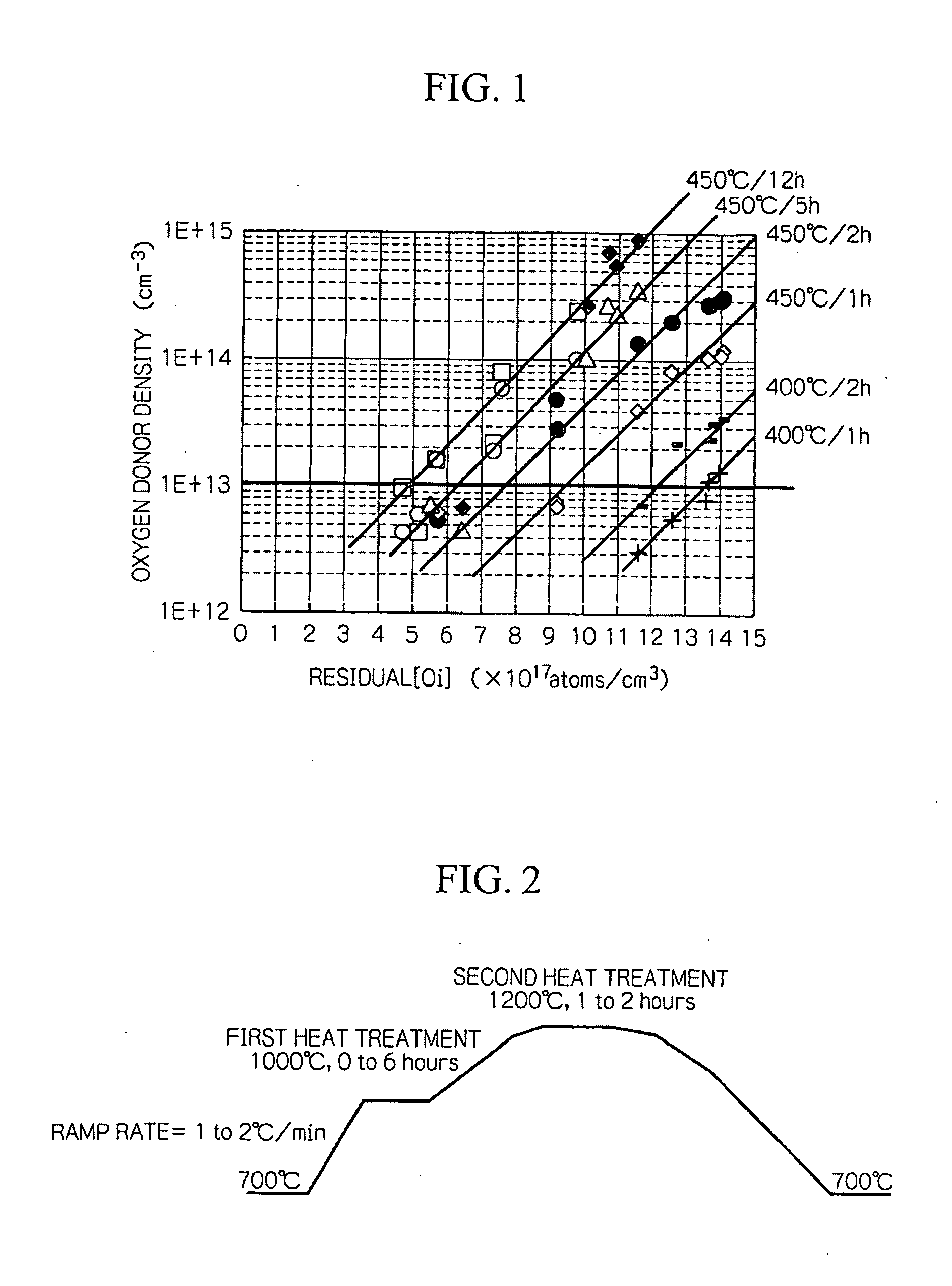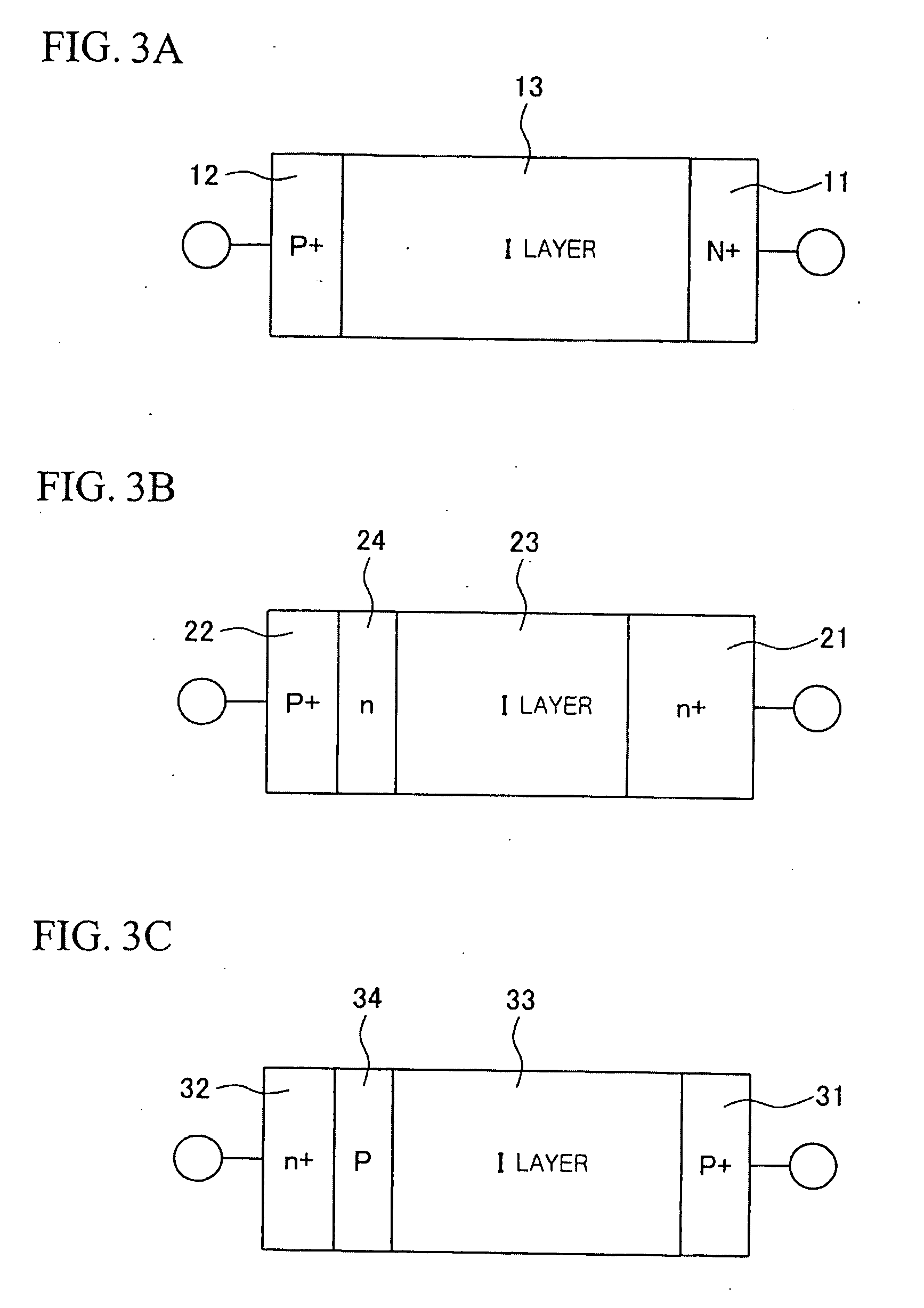Silicon wafer and method for producing same
a technology of silicon wafers and silicon wafers, which is applied in the direction of crystal growth process, after-treatment details, and protective fluids, etc., can solve the problems of difficult to ensure the desired resistivity, the inability to avoid the use of crystals with a small diameter, and the inability to achieve the enhancement of the productivity of high-frequency diodes, etc., to achieve the effect of reducing the generation of oxygen donors in the device-production heat treatment and high quality
- Summary
- Abstract
- Description
- Claims
- Application Information
AI Technical Summary
Benefits of technology
Problems solved by technology
Method used
Image
Examples
examples 1 through 4
[0101]A silicon single crystal having a crystal length of 1160 mm shown in FIG. 13 was grown by the CZ method and silicon wafers were sliced from the single crystal. From each of the Top, Middle, and Bottom portions of the crystal shown in FIG. 13, 50 mirror-polished wafers were obtained. The followings are the average values of resistivity, primary interstitial oxygen concentration, and carbon concentration of each portions: the Top portion had an resistivity of 980 Ωcm, primary interstitial oxygen concentration of 15.9×1017 atoms / cm3 (OLD ASTM), and carbon concentration of 4.8×1015 atoms / cm3; the Middle portion had a resistivity of 831 Ωcm, primary interstitial oxygen concentration of 14.6×1017 atoms / cm3 (OLD ASTM), and carbon concentration of 1.5×1016 atoms / cm3; and the Bottom portion had a resistivity of 599 Ωcm, primary interstitial oxygen concentration of 13.4×1017 atoms / cm3 (OLD ASTM) and carbon concentration of 5.9×1016 atoms / cm3.
[0102]Silicon wafers obtained from each porti...
example 5
[0104]A silicon single crystal having a resistivity of 1000 Ωcm, a primary interstitial oxygen concentration of 14.5×1017 atoms / cm3 (OLD ASTM) was grown by the CZ method. Silicon wafers sliced from the silicon single crystal were subjected to a beat treatment. Using a heat treatment furnace employing the lamp heating mechanism, beating temperature of the wafer was increased from 700° C. to 1000° C. with a heating rate of 5° C. / min. After the heat treatment, thermal stress of 4 MPa was applied to the wafers and occurrence of slip was examined in the same manner as in the above-described Examples 1 to 4. The results are shown in FIG. 9.
[0105]As shown in FIGS. 5 through 9, irrespective of the crystal portions of the silicon single crystal, wafers in Examples 2 through 4 heated with a heating rate of 1.0 to 2.0° C. / min showed fewer occurrences of slip compared with Example 5. Wafers in Example 3 heated with a heating rate of 1.5° C. / min showed fewer occurrences of slip compared with waf...
example 6
[0106]A silicon single crystal having a resistivity of 1000 Ωcm, primary interstitial oxygen concentration of 14.5×1017 atoms / cm3 (OLD ASTM), and a carbon concentration of 1.5×1016 atoms / cm3 was grown by the CZ method. Silicon wafers sliced from the silicon single crystal were subjected to a heat treatment. Using a heat treatment furnace employing the lamp heating mechanism, heating temperature of the wafer was increased from 700° C. to 1000° C. where the heating rate was selected from the various rates within the range of 1 to 2° C. / min and retained at 1000° C. for a duration selected from various durations in a range of 0 to 6 hours. After the heat treatment, relation between the heat treatment condition and residual interstitial oxygen concentration was examined. The results are shown in FIG. 10.
[0107]FIG. 10 is a graph showing the relation between a heating rate, a retention time at 1000° C., and a residual interstitial oxygen concentration (Res. [Oi]). As shown in FIG. 10, resi...
PUM
| Property | Measurement | Unit |
|---|---|---|
| resistivity | aaaaa | aaaaa |
| temperature | aaaaa | aaaaa |
| resistivity | aaaaa | aaaaa |
Abstract
Description
Claims
Application Information
 Login to View More
Login to View More - R&D
- Intellectual Property
- Life Sciences
- Materials
- Tech Scout
- Unparalleled Data Quality
- Higher Quality Content
- 60% Fewer Hallucinations
Browse by: Latest US Patents, China's latest patents, Technical Efficacy Thesaurus, Application Domain, Technology Topic, Popular Technical Reports.
© 2025 PatSnap. All rights reserved.Legal|Privacy policy|Modern Slavery Act Transparency Statement|Sitemap|About US| Contact US: help@patsnap.com



